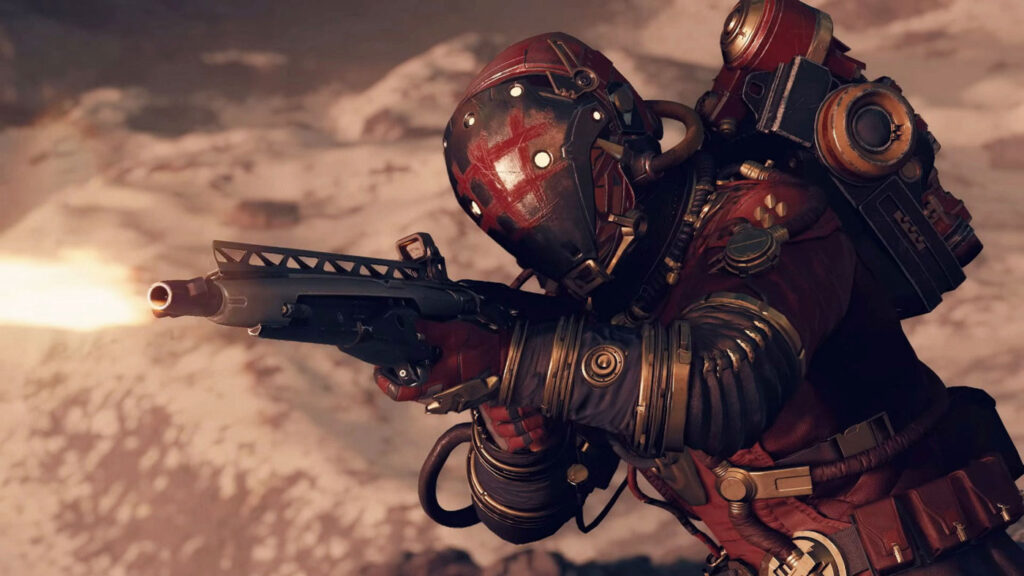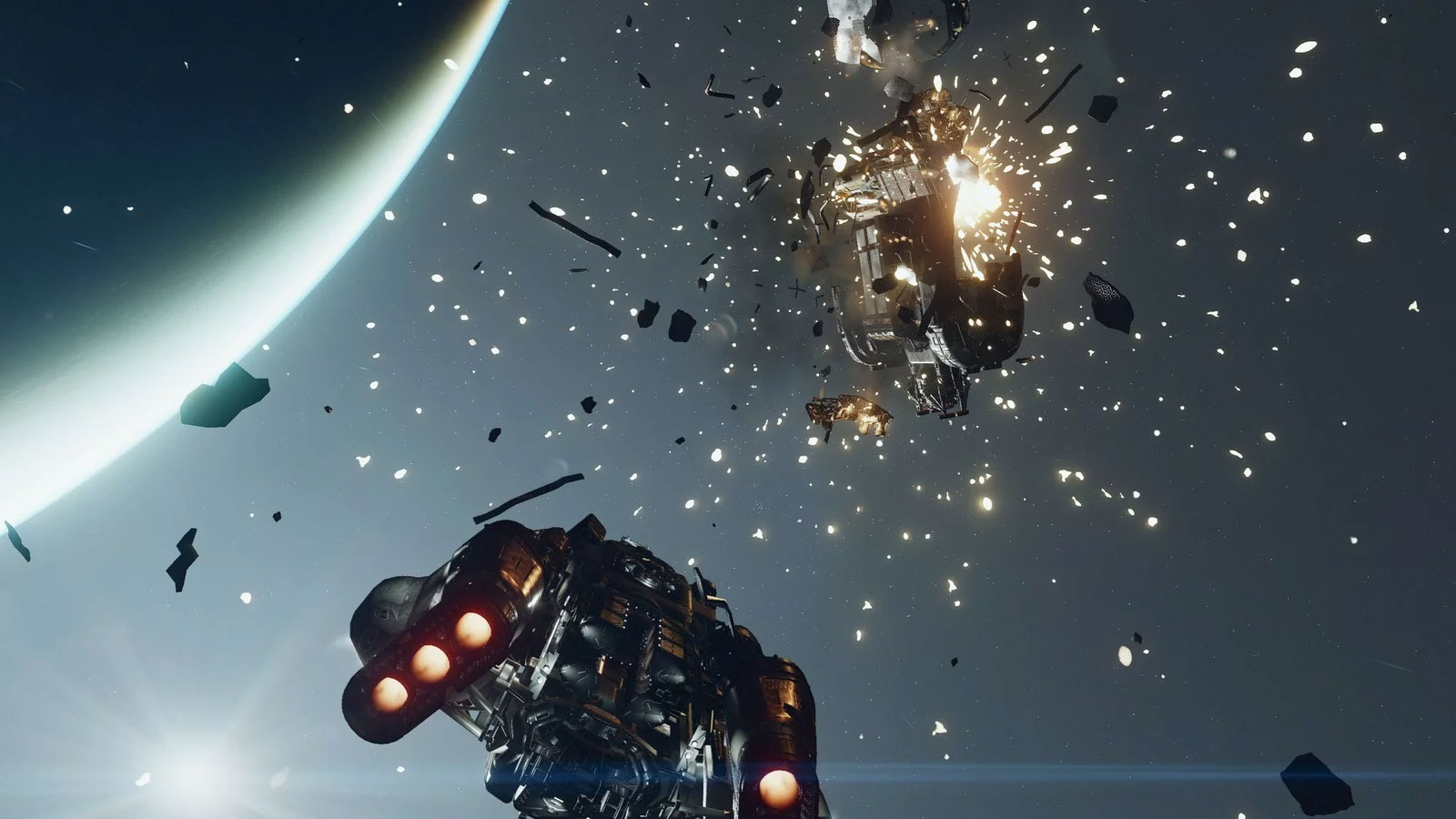“Success is a shore you never reach.”
With the launch of Bethesda’s massive and massively-anticipated RPG Starfield, we have a fascinating example of what has changed and how much has stayed the same in three decades of gaming.
While game complexity has increased massively at a superficial level – Starfield took 8 years to make and weighs 125GB – on the level of story, it’s business as usual.
The first reviews of the game are in and they make for troubling reading, at least for me. While Bethesda’s games have been blighted by rough releases in the past, that doesn’t seem to be the problem here. Instead, what many reviewers are pointing out is that Starfield’s promise of a whole universe of awe-inspiring possibility has been collapsed down into a main storyline that forces you along one path, combined with a plethora of side quests.
The quote that sticks for me, from IGN’s Dan Stapleton:
“Somewhere along my 55 or so hours spent playing Starfield, I dropped the notion of finding that wondrous space adventure and accepted Starfield for what it is: a shooter-focused RPG in the traditional Bethesda framework that has its wild and fun moments but one that’s ultimately a mile wide and an inch deep.”
The game is Bethesda’s first crack at an IP (intellectual property) blank slate in 25 years. A survey of the trailers and reviews points to the generic nature of many of the story elements: the game lore includes space cowboys, pirates, smugglers, jump drives and magical forces, which all sound very familiar.
This isn’t necessarily a problem. Every piece of content – or work of art, choose your term – must balance the familiar and the novel to succeed. Familiarity allows the audience to enter the world, but it must also be interesting enough to hold them there. To be interesting, something must contain new information. At least, that’s what I believe after a career spent trying to get people to pay attention.
On top of this tension between the familiar and novel, games like Starfield have another balance to strike: between player freedom and story. In truly open worlds, it’s difficult for developers to tell a particular story. On the opposite end of the spectrum, a locked-in narrative with no meaningful choice risks the “possibility collapse” that Starfield apparently suffers from.
Never-ending story

Starfield’s story conundrum is front-of-mind for me at the moment because I attended a seminar for game writers this week. Host Jonathan Callan, who has written extensively for games and TV, used examples stretching back to the 90s.
Jonathan brought up the 2007 game Bioshock – a first-person shooter with a strong RPG story element – as an exemplar of how to tell a compelling story while allowing freedom of movement constrained by level design.
Seeing Bioshock’s underwater art-deco city reminded me just how cool and interesting games could be. The superficial elements of gaming might have increased out of sight in the 15 years since Bioshock’s release – what games look like, how big levels are – but RPG and shooter developers are still struggling with the same old tensions and trade-offs at the heart of their creations.
Unfortunately, despite 8 years in the oven and all Bethesda’s experience, it seems Starfield may have failed to nail those trade-offs the first time around. One wonderful thing about game development is that the first release of a game is not the last, and significant improvement is possible. Success may be a shore no one ever reaches – to quote Jonathan Callan – but game developers can keep it in view for a long time.
Other nuggets from Jonathan Callan

Jonathan’s observations about game story are relevant to the thousands of games in development around the world, including blockchain games. It was the first time I had heard of “ludonarrative dissonance”, a phrase that refers to the tension between what is said and what is done in games: eg, a supposedly righteous hero who spends all his time slaughtering people.
“Nearly every game since the inception of games has some amount of ludonarrative dissonance … they often feature a likeable protagonist in the pursuit of a good objective, but with mechanics that involve the relentless and repetitive killing of your enemies. It’s not that no heroic character has ever killed in the history of fiction, it’s that most don’t spend 90 percent of their time killing.”
This led Jonathan to consider how to broaden the appeal of games, a necessary step in the evolution of gaming.
“How do we make games that appeal to the whole host of human interest and not just teenage boys? It’s not like women don’t watch movies and television with violence in them, but they usually watch [things] with different kinds of violence. The question of how we make games a medium that appeals to everyone, not necessarily simultaneously … I think that’s the more important question than the 1990s question of ‘is Mortal Kombat too violent for kids?’”
What about the blockchain?
Naturally, he also had an opinion about web3 gaming.
“No one knows what web3 is yet. It’s probably nothing. It’s probably just branding.”
“Web2 … you didn’t know what it was until it was over. The same thing is true of web3. I will say this, I don’t think it’s the kind of magical utopian innovation for video games that some people try to sell it as. But the space has possibilities, and if it helps you raise money to tell cool stories, that’s ultimately what matters. People respond to cool stories and good games, and not the bells and whistles that venture capitalists respond to.”
Well, I find that insightful, and I hope you do too.
Enjoy this web version of our newsletter? Sign up and receive an update every week for free.














